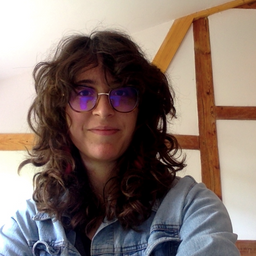Planning Instruments for Industrial Heritage Reuse and Regeneration through Citizen Engagement
Mon statut pour la session
This session presents case studies and policy reviews that contribute to ongoing debate and international dialogue on the role of planning systems and conservation practices in addressing the challenges of citizen engagement—conserving local interests, place attachments alongside physical remnants of industrial heritage. Over the past half century, we have witnessed the development and changing focuses of urban planning and conservation discourses addressing industrial heritage. Relevant planning policies evolve from encouraging the reuse of former factory buildings in historic urban quarters; to forming public-private partnership to finance the regeneration of historic ports and industrial waterfronts; to leveraging creative industries to valorize and rebrand underused industrial structures; to crowdsourcing public interests and community supports for safeguarding the remnants and memories of their industrial pasts. From building recycling to place making, various innovative planning instruments—such as regulatory tools, financial incentives, participatory processes or management approaches—are created to prevent the loss of industrial heritage or to capitalize on industrial remains as cultural assets for spurring economic growth.
Although planning instruments are invariably invented to circumvent particular problems at a given socio-economic context and to be implemented in a particular national planning system, successful implementation of such instruments often attracts global attentions and emulations to replicate success. Some instruments have been proven transferrable globally; others may have been adopted but substantially adapted to different cultural or socio-economic contexts. Some are at the forefront of innovation, conducting bold experiments with radical approaches to existing industrial structures and fabric so to effectuate socio-economic revitalization; others achieve success by deliberating a ‘cocktail’ of amended legislation, process and/or collaboration with actors from different sectors. What lessons can be learnt from various planning instruments that have been used to safeguard and repurpose obsolete industrial buildings and sites across the world? What can be the alternative mechanisms or procedures to prompt citizen-oriented initiatives and community-driven development, thereby circumventing the socio-economic and spatial injustice caused by the commodification or gentrification of industrial heritage and recognizing its cultural significance in the 21st century?
This session was originally designed by Plácido Gonzáles Martinez, Yiwen Wang and Loes Veldpaus
Sous sessions
André Corboz in his article «A good use of historical sites» develops a model of city planning based on the conservation of cultural goods. This city model ensures the optimum distribution of activities and exchanges based on local resources and in favor of inhabitants, without eliminating some dimensions essential to our sensitivity like local heritage. Considering Corboz model of city planning as a critical alternative to the productive rationality of common urbanization, the purpose of the...
Many cities with a highly industrial past in Europe, the US and, more recently, the Global South have developed regeneration programs to overcome the challenges derived from the deindustrialisation and tertiarization of their societies. Often, these programs have claimed to be culture-led or creativity-led, and have used former industrial buildings to turn them into arts venues, innovation hubs or high standard lofts. Commonly, these regeneration processes do not take properly...
From the early 19th century, the southern edge of the Marseille coastline was privileged with industries, including lead factories, spinning mills, and glassworks. In 1873, Hillarion Roux created a lead factory at Madrague de Montredon. After ten years, production ceased, and the factory was subsequently sold to the Mante family, who converted it to the fabrication of tartaric acid. In 1887, they formed Legré-Mante et Cie, which remained on the site until 1980. In 1981, the Margnat family acq...



